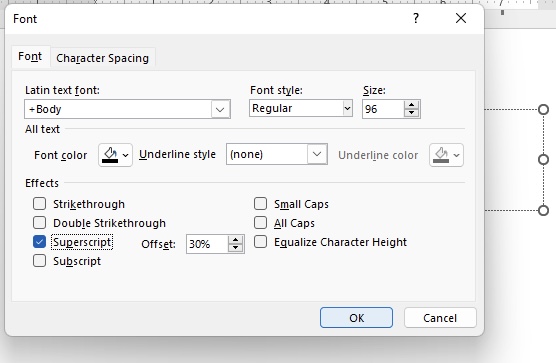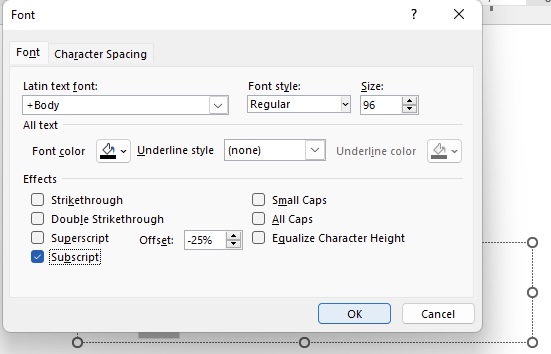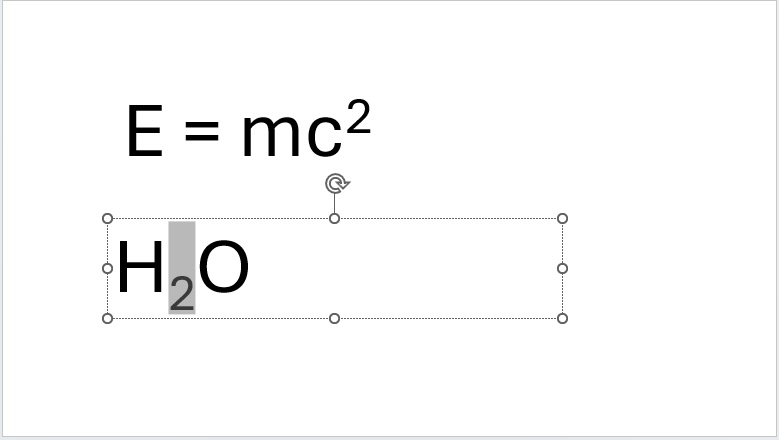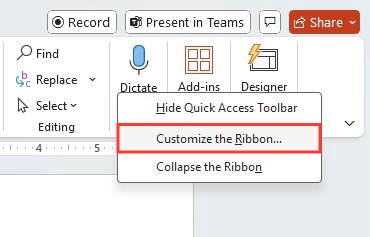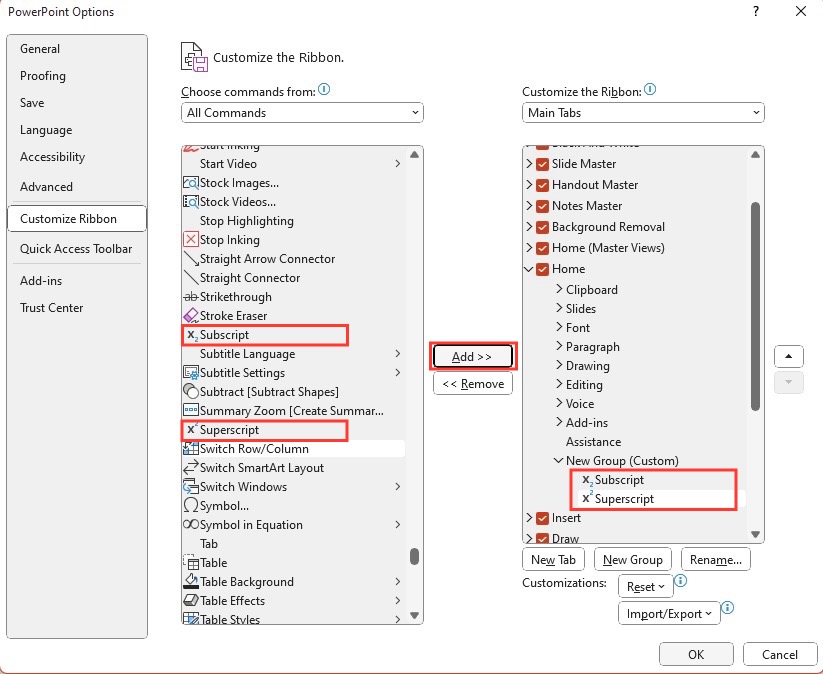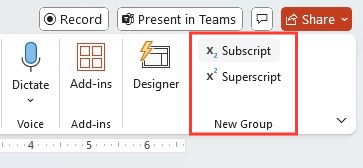We often encounter situations in presentations where we need to display numbers or letters in their exponential form. This is especially common in subjects like mathematics and science, where exponents are integral to conveying equations and scientific notations accurately.
The Importance of Proper Exponent Formatting
Proper exponent formatting is pivotal for clear communication. It ensures that the audience can easily discern the difference between base numbers and their exponential powers, which can be crucial in technical fields such as engineering or physics. Moreover, accurate formatting can ward off misunderstandings that might arise from misreading figures and calculations, which is essential in both business and academic settings.
Key Takeaways
- To add PowerPoint exponents, utilize the “Equation” function located in the “Insert” tab under “Symbols” which allows for direct editing and includes templates like Area of Circle or the Binomial Theorem.
- Superscript formatting can be applied to text to create exponents by selecting the text and using the Superscript button in the “Font” group or pressing the keyboard shortcut (typically “Ctrl” + “Shift” + “=”).
- For users unfamiliar with formatting for exponents, PowerPoint offers a method to search and insert specific symbols, ensuring the correct superscript or subscript character is used in the presentation.
Table of Contents
Getting Started with Subscript and Superscript in PowerPoint
Subscript 101: Writing Lowered Characters with Ease
Writing lowered characters, or subscripts, is a straightforward process in PowerPoint. Subscripts are often used for chemical formulas, footnotes, or to indicate a variable index. To create a subscript, you’ll select the text you want to modify and then either use the dedicated keyboard shortcut, which is Ctrl and the Equal sign (=), or access the Font dialog box and check the Subscript option. This simple action will instantly transform your selected characters into properly formatted subscripts, ensuring they’re correctly positioned below the baseline of your text.
Superscript Mastery: How to Showcase Raised Numbers Effectively
Achieving mastery over superscript involves showcasing raised numbers or characters effectively. Superscripts are critical for expressing exponential values, mathematical powers, and scientific notations. To convert text into a superscript in PowerPoint, select the desired characters and simultaneously press Ctrl, Shift, and the Plus sign (+). This quick action elevates your characters above the standard text line, enhancing the professional look of your equations or references. Remember, consistency in your use of superscripts throughout your presentation can significantly boost its overall polish and readability.
Step-by-Step Instructions: Adding Exponents in PowerPoint
STEP 1: Highlight the text you want to format as superscript or subscript.
STEP 2: Go to the Home tab.
STEP 3: In the Font group, click on the small arrow in the bottom-right corner to open the Font Dialog Box.
STEP 4: In the Font Dialog Box, find the Effects section.
STEP 5: Check the box for either Superscript or Subscript, depending on your need.
STEP 6: Click OK to apply the changes.
Using the Font Dialog Box is convenient because it allows you to adjust multiple font attributes at once without switching between different menu areas.
Ribbon Menu Magic: Accessing Advanced Exponent Options
If I want to take my presentations to the next level with more advanced exponent options, customizing the Ribbon Menu in PowerPoint is my go-to strategy. By right-clicking the Ribbon and selecting ‘Customize the Ribbon’, I can easily add the Superscript and Subscript buttons to a custom group for quick access. This is particularly valuable when I’m frequently toggling between these formats, as it saves time and keeps my workflow smooth. Configuring the Ribbon to suit my specific needs can really boost my efficiency when working with exponents in my slides.
Tips and Tricks for Perfect Exponents Every Time
Keyboard Shortcuts: Expedite Your Exponent Typing
To expedite typing exponents in PowerPoint, I often make use of keyboard shortcuts which allow me to quickly toggle between normal text and exponent formatting. For superscript, the shortcut is Ctrl + Shift + Plus sign (+), and for subscript, it’s Ctrl + Equal sign (=). These shortcuts are life-savers when I’m inputting a substantial amount of mathematical data or chemical equations, enabling me to work at a faster pace while ensuring that each exponent is correctly placed. It’s a small trick that can make a big difference in the efficiency of my workflow.
Copy-Paste Tactics: A Foolproof Method for Complex Exponents
When I’m dealing with complex exponents that need precise formatting or are not readily available on the keyboard, the copy-paste tactic is foolproof. I find the exponent I want using an online search engine or the Character Map if on a Windows system. Once found, I copy it (Ctrl+C or Command+C), and then paste it (Ctrl+V or Command+V) into PowerPoint at the desired location. This method is incredibly useful for inserting unusual or intricate exponents quickly and accurately, ensuring my presentation maintains a professional standard.
Advanced Exponent Techniques for Power Users
Delving into the Equation Tab for Detailed Exponents
When my work requires detailed attention to complex mathematical expressions, I delve into the specialized features located under the Equation tab in PowerPoint. This dedicated environment offers an extensive range of templates and symbols that cater specifically to the needs of mathematical typesetting, including positioning detailed exponents precisely as needed. By selecting the Equation tab, I can insert an equation and choose from a multitude of options to create exactly the exponent I require, be it for algebra, calculus, or any scientific discipline.
Crafting Custom Equations with Math Functionality in PowerPoint
For presentations that demand custom equations, I leverage the robust math functionality of PowerPoint. By selecting ‘Insert’, then ‘Equation’, I can build an equation from scratch or modify an existing template to my exact specifications. The tools available enable me to insert fractions, integrals, operators, and yes, exponents of all kinds. What’s more, using the ‘Ink Equation’ feature, I’ve found that I can handwrite an equation if I prefer a more personalized touch, which PowerPoint will then convert into a typed format.
Keeping Your Audience Engaged with Clear Exponent Representation
Design Considerations for Readability and Comprehension
When it comes to exponents, design plays a critical role in readability and comprehension. I prioritize a clean, uncluttered layout that allows my audience to easily follow along, especially when presenting complex information. I use a font size that ensures exponents are distinguishable but not overpowering. High contrast between text and background, along with consistent use of color, directs viewer’s attention appropriately. Additionally, strategic spacing around exponents helps to separate them visually from other elements, preventing any potential confusion.
Best Practices for Using Exponents in Business and Academic Settings
In both business and academic settings, using exponents in presentations demands adherence to best practices to ensure precision and professionalism. In such contexts, I ensure that I use the correct terminology and notation to convey credibility and authority. Particularly, I verify that all exponents are consistent in terms of formatting and style throughout the presentation. Furthermore, I also consider the audience’s familiarity with the subject matter, adjusting the complexity of the content as needed. Finally, I always complement exponents with spoken or written explanations to facilitate understanding.
Common Pitfalls and How to Avoid Them
When Exponents Go Wrong: Troubleshooting Common Issues
Even with careful preparation, issues with exponents can arise, and troubleshooting them becomes an essential skill. Common issues include incorrect formatting that leads to misinterpretation of the exponent value or inconsistency across slides. If exponents appear too small or blend with the base numbers, I adjust the font size or color for clarity. Sometimes, the superscript or subscript may not align properly with the text, and this can be fixed by fine-tuning the baseline shift in the font settings. Always proofreading and testing the presentation on different screens help me catch and correct any errors before they reach the audience.
Ascending Beyond Limitations: Overcoming PowerPoint’s Exponent Constraints
PowerPoint is a versatile tool, yet it has its limitations, especially when dealing with more complex or non-standard exponent applications. To ascend beyond these limitations, I often integrate other software, like advanced equation editors or embedding content from mathematics programs. If I find that PowerPoint doesn’t accommodate a specific exponential format, I consider creating the notation as an image and then importing it into my slide. This approach ensures that I’m not constrained by the inbuilt features of PowerPoint and can present exponents in the exact form necessary for my content.
FAQ: Answering Your Exponent Questions
How do I insert superscript or subscript symbols quickly?
To quickly insert superscript or subscript symbols in PowerPoint, select the text you wish to format and press Ctrl, Shift, and Plus sign (+) for superscript, or Ctrl and the Equal sign (=) for subscript. For frequent use, you might also add these options to the Quick Access Toolbar from the Customize options.
Can I use standard keyboard shortcuts for adding exponents in PowerPoint?
Yes, you can use standard keyboard shortcuts to add exponents in PowerPoint. Pressing the Ctrl, Shift, and Plus sign (+) keys together will apply superscript, while Ctrl and the Equal sign (=) keys will apply subscript. These shortcuts provide a quick way to format exponents without navigating through menus.
Are there any limitations to PowerPoint’s exponent handling capabilities?
While PowerPoint’s exponent handling capabilities are generally sufficient for most uses, they may have limitations when dealing with very complex mathematical notations or specialized formatting found in advanced scientific publications. For such intricate requirements, additional software specialized in mathematical typesetting might be necessary to achieve the desired level of precision and customization.
John Michaloudis is a former accountant and finance analyst at General Electric, a Microsoft MVP since 2020, an Amazon #1 bestselling author of 4 Microsoft Excel books and teacher of Microsoft Excel & Office over at his flagship MyExcelOnline Academy Online Course.


